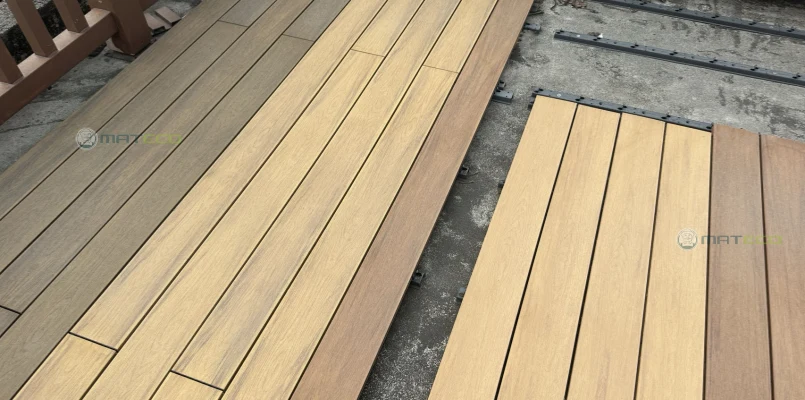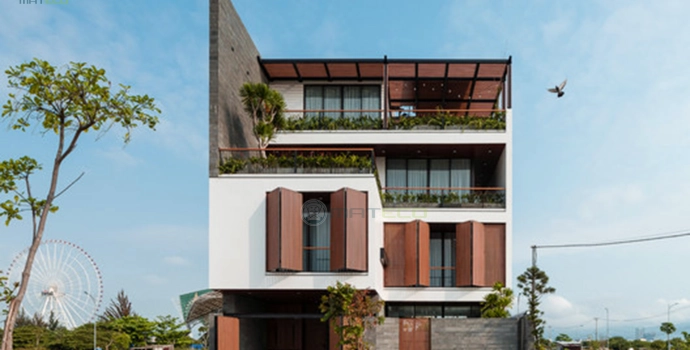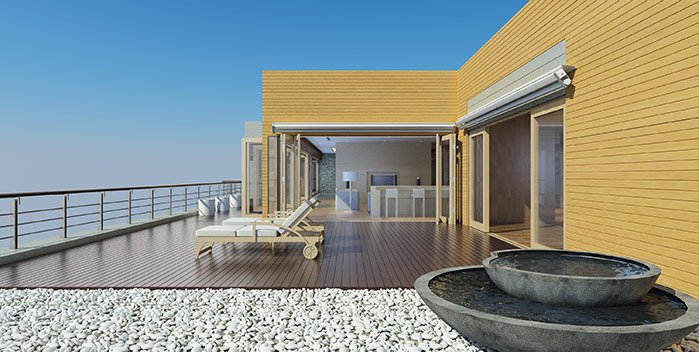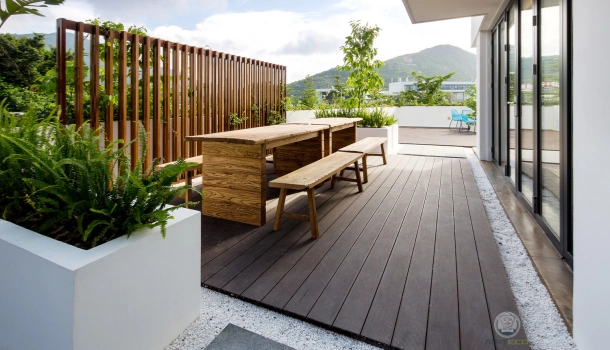Composite Deck Lifespan: How Long Do They Last?
Composite decking has gained immense popularity in recent years due to its durability, low maintenance requirements, and eco-friendly properties. For wholesalers considering adding composite decking to their product lines, understanding its lifespan is crucial. This article delves into how long composite decking lasts, the factors that affect its longevity, and how to ensure it stands the test of time.

What is Composite Decking?
Composite decking is a man-made building product that combines recycled wood fibers and plastic. Our composite decking utilizes co-extrusion technology, a process in which multiple layers of materials are extruded simultaneously to form a single, cohesive product. This involves creating a core made from a blend of recycled wood fibers and plastic, while applying a protective outer layer that enhances durability, UV resistance, and aesthetic appeal. Unlike traditional wood decking, composite decking is engineered to withstand weather, insects, and everyday wear and tear, making it a highly durable and resilient decking material.
Comparison with Traditional Wood Decking
Composite decking offers several advantages over traditional wood decking. It is less prone to warping, splintering, and rotting, and it requires significantly less maintenance. Additionally, composite decking often comes with a longer warranty, reflecting its expected longer lifespan.
Average Lifespan of Composite Decking
The general lifespan of composite decking is typically between 25 and 30 years, although some high-quality brands claim their products can last even longer. This lifespan is influenced by various factors, including the quality of materials used, the installation process, environmental conditions, and how well the decking is maintained.
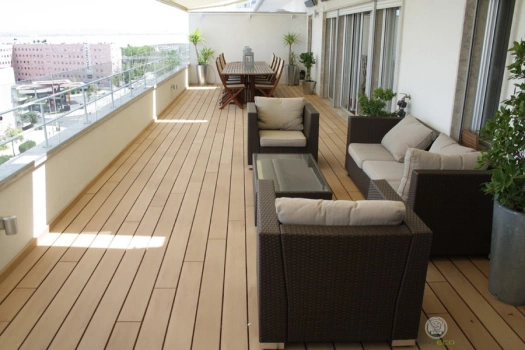
Factors Affecting the Longevity of Composite Decking
Quality of Materials
The durability of composite decking largely depends on the quality of the materials used. High-quality composite decking, made from premium wood fibers and plastic, tends to last longer and perform better over time. Choosing reputable brands that use top-notch materials is essential for wholesalers who want to offer long-lasting products. By obtaining samples, wholesalers can often assess the product quality with a high degree of accuracy.
Installation Quality
Proper installation is crucial for maximizing the lifespan of composite decking. Incorrect installation can lead to issues such as uneven surfaces, gaps, and water damage, which can significantly reduce the decking's longevity. Ensuring that the decking is installed by professionals following manufacturer guidelines is key. But WPC decking are easy to install.
Environmental Factors
The environment where the decking is installed plays a significant role in its durability. Exposure to extreme weather conditions, such as intense sunlight, heavy rain, or high humidity, can affect the lifespan of composite decking. While composite decking is designed to withstand these elements better than wood, it is still important to consider the specific environmental conditions of the installation site.
Maintenance Practices
Regular maintenance can extend the life of composite decking. This includes cleaning the decking to remove dirt, debris, and mold, as well as addressing any damage promptly. Following the manufacturer's maintenance recommendations is essential for preserving the decking's appearance and structural integrity.
Usage Patterns
The amount of foot traffic and the types of activities the decking is subjected to can also impact its lifespan. Decking that experiences heavy use, such as in commercial settings or high-traffic residential areas, may wear out faster than decking used less frequently. Using protective measures, like furniture pads and mats, can help reduce wear and tear.

Benefits of Composite Decking Over Traditional Wood
Durability
Composite decking is highly resistant to common issues that plague wood decking, such as rot, warping, and splintering. This makes it a more durable option, especially in environments prone to moisture and fluctuating temperatures.
Maintenance
One of the most significant advantages of composite decking is its low maintenance requirements. Unlike wood, which needs regular staining, sealing, and repairs, composite decking only requires occasional cleaning to maintain its appearance and functionality.
Aesthetic Longevity
Composite decking retains its color and appearance much longer than wood. It is engineered to resist fading and staining, ensuring that it looks good for many years with minimal upkeep.
Environmental Impact
Composite decking is often made from recycled materials, making it an environmentally friendly choice. By using composite decking, wholesalers can offer a product that supports sustainability and reduces the demand for virgin wood.
Maintenance Tips to Prolong the Life of Composite Decking
Regular cleaning of composite decking is essential to maintain its appearance and prevent the buildup of dirt and debris. A simple solution of soap and water, along with a soft brush, can effectively clean the surface without causing damage.
Different seasons require specific care strategies; in the fall, remove leaves and debris to prevent moisture buildup, and in the winter, use a plastic shovel to remove snow, avoiding metal tools that can scratch the surface.
Following these maintenance tips will help ensure your composite decking remains in excellent condition for many years.
Conclusion
Composite decking is an excellent investment due to its durability, low maintenance requirements, and environmental benefits. By understanding the factors that affect its longevity and following proper maintenance practices, composite decking can last between 25 and 30 years, or even longer. Wholesalers looking to add a reliable, long-lasting product to their offerings should consider composite decking for its many advantages.
FAQs
1. Can composite decking be painted or stained?
Most composite decking does not require painting or staining and is designed to maintain its color over time. However, some products may allow for painting or staining if desired.
2. How often should composite decking be cleaned?
Composite decking should be cleaned at least twice a year, or more frequently if it is located in an area with heavy foot traffic or high moisture levels.




